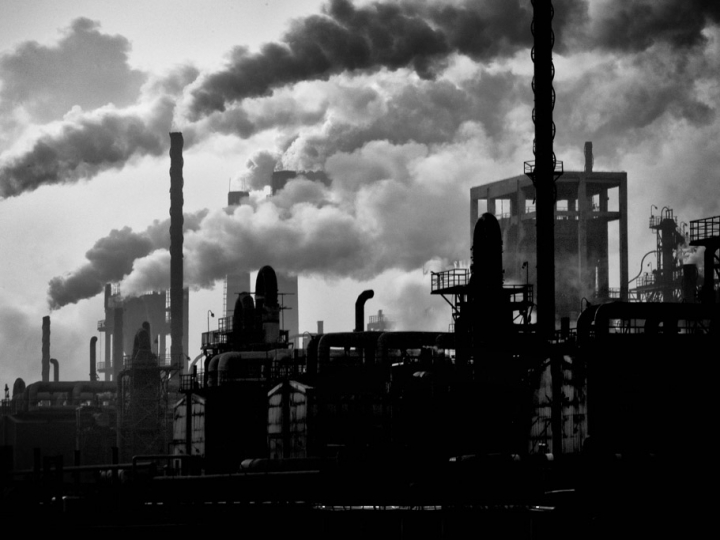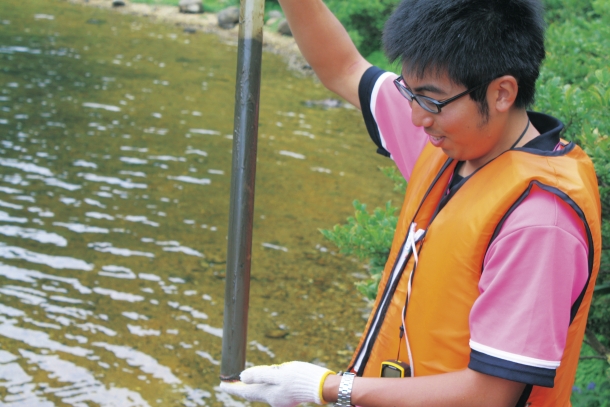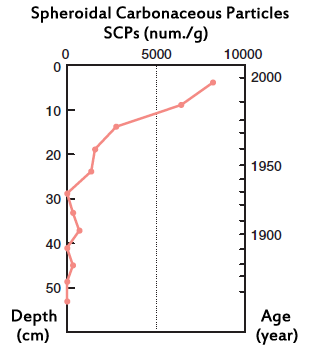Globalization of environmental pollution
Wed, Oct 18, 2017-
Tags
Stories the deposits in our lakes and reservoirs have to tell about earth

“Globalization does not stop in people and money, but has extended to environmental issues, complicating things more than ever in the process. What should and can we do in order to realize a sustainable earth?”
Change and transition in environmental issues
Approximately 4.6 billion years have passed since the formation of earth. Despite its long history, earth’s environment has only changed drastically in the past 200 years since industry revolution took place. If we were to consider our 4.6 billion year old earth as one year old (365 days), every second in earth’s time would be equivalent to one year in our time. In other words, the tremendous change humans make to earth every year happens, from the perspective of earth, in just a split second.
The cause lies in the change of human lifestyle as a result of unsatisfiable desire. Over the past centuries, earth has been consuming more resources than it can replenish due to the development and diversification of various industries such as mining and manufacturing. These activities have produced by product that led to various environmental pollution, and problems related to waste disposal. On the bright side, oil crises in the 1970s became the turning point when people from countries all over the world started paying attention to the damages caused to earth by human activities, and began steering towards adopting global sustainable development.
Have you ever heard of Rachel Carson? She is the writer of Silent Spring, an environmental science book published in 1962. Her book warns about how synthetic chemicals made by humans cause damage to the natural ecosystem and eventually put human lives in danger, a classics in environment studies. Humans have been producing substances that do not exist in nature in the process of development. These substances, however, are harmful in nature and could cause destruction to nature if not handled with caution.
Cross-border pollution
Persistent Organic Pollutants (POPs) is one of the commonly known environmental pollutants. As POPs are low or non-biodegradable, they are often use as pesticide in agriculture. However, in recent years, studies have discovered high concentration of these POPs in the body of animals living in the Polar Regions, such as in seals and dolphins. These POPs have travelled all the way to the Polar Regions from agriculture used in countries in the mid-latitude and tropical regions. This was possible because POPs are generally low in volatility (i.e. they change easily to gas). When they enter the atmosphere, condense and evaporate repeatedly in the process, they travel and spread over a wide area and eventually land on the Polar Regions, a phenomenon commonly known as the global distillation or grasshopper effect.
On the other hand, contaminants produced from factories in countries which are heavy in industrialization also tend to cross national borders resulting in environmental problems in neighboring countries. Acid rains in Europe and North America, water pollution in international rivers shared by countries and marine pollution are just some examples.
Analysis and examination of samples taken from lakes and reservoirs

image 1. Mountain lake (1,099 m above sea level) at the border of Fukui and Gifu prefectures where samples were taken.
Let us shift the focus to Japan. In the 1960s, Japan was experiencing rapid economic growth but also causing air and water pollution at the same time. Nevertheless, through tightening of regulations and improvement in technology, Japan was able to amend the problems it had caused. However, in recent years, pollutants and contaminants with diameter less than 2.5 micrometers (or PM 2.5) from China carried by westerlies to the east (where Japan is) has become an issue. Even now, the pollution caused by these microparticles are still being closely observed in real time.

image 2. Sample taking from the mountain lake in image 1.
In my lab, we have been analyzing sediments from lakes and marshes of Japan, South Korea and China (image 1 & image 2). These pollutants that settle down from the atmosphere are easily accumulated at the bottom of lakes and reservoirs that experience low inflow from and outflow to flowing rivers. As such, the sediments at the bottom of these lakes and reservoirs are old, and the ones on top are relatively new. We take samples of these sediments vertically from above and divide them equally into parts with 2 cm difference in depth. From a typical lake, we are able to take 50 to 100 cm pillar of samples.

figure 1. This graph is plotted based on the samples collected in image 2. The graph shows a significant increase in the amount of SCPs since 1980.
After which, we analysis the samples and measure the concentration of contamination present, and then plot the trend in concentration against depth and age of the core where the samples are taken (see figure 1). After various examinations of the samples, we were able to deduce that the industrial activities in China have been heavily polluting the environment of Japan since early 1980s.
The key to solving environmental problems
Human activities have caused a great impact on earth and its environment. We have done various experiments on the planet we live in. By coming face to face with these experiments we have conducted on earth, I believe we can eventually find solutions to maintaining a sustainable planet. Additionally, we can also find solutions to solving issues among the human race amid the diversifying and wide spread of environment problems. Having said so, the most important thing is to get as many people to think about our environment and the damaged our actions have caused to it.
Professor Kazuo Kamura from the Faculty of Science and Engineering

Professor Kamura did his undergraduate and graduate studies at Waseda University where he eventually earned a PhD in engineering. Specializing in Environmental Studies, he worked as a researcher for a public research organization for over 20 years before joining the Department of Resources and Environmental Engineering in the School of Creative Science and Engineering at Waseda University. When doing research, he pays great attention to the correlation between field and lab data.
*This article was originally written in Japanese by Professor Kamura in 2016.
The information of this article is based on when it was written.













